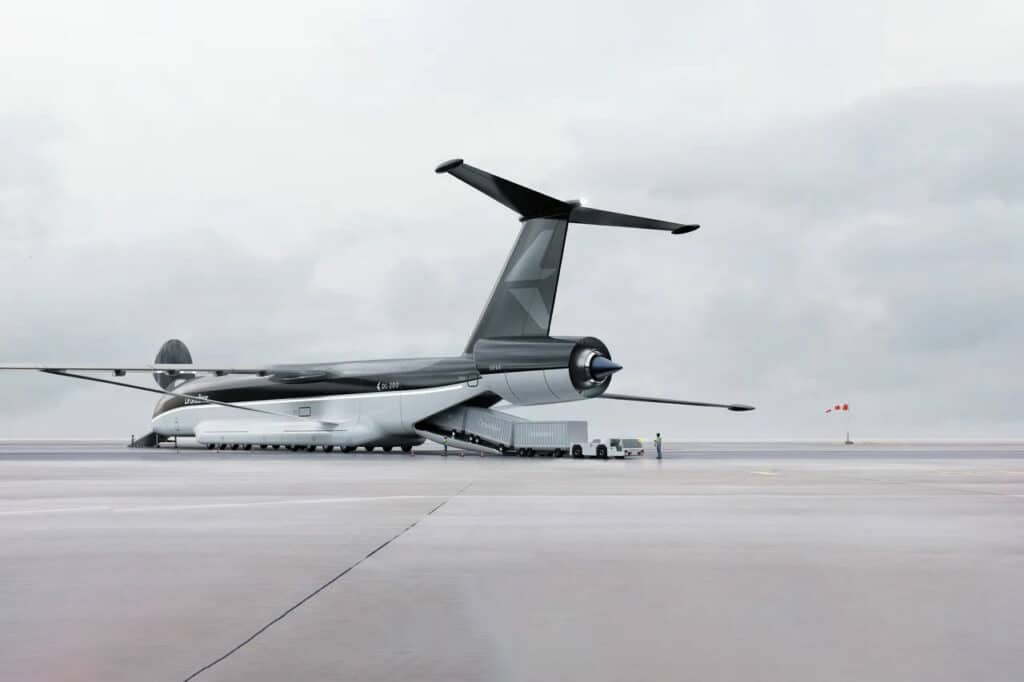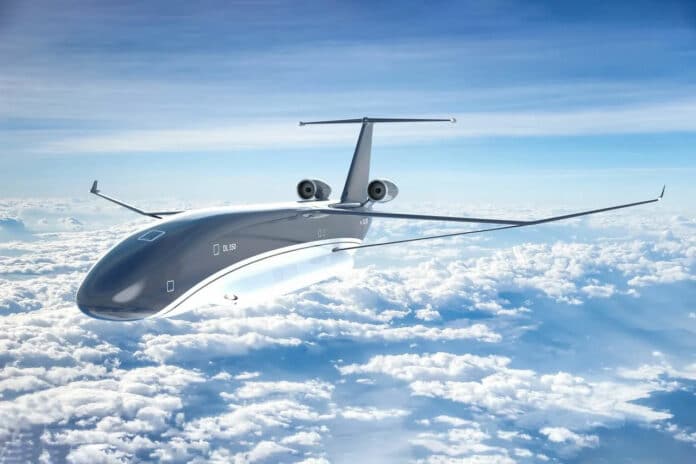In transporting logistics, most cargo is transported by ships as they can carry significantly heavier container loads at a very low cost. However, sea freight takes weeks to deliver the cargo. Shipping ports are getting busier and more congested as container ships grow in number and size.
Airways can deliver cargo within just a few days. Still, air freight is the most expensive due to the limited payload, the amount and cost of fuel used, the complexities of the loading and unloading process, and the crew payroll. Also, current aircraft are not designed to handle them. Moreover, airports still prioritize passenger traffic and flow, adding to the delays in cargo delivery.
To overcome these problems, UK-based airline and aviation company Droneliner has announced its cargo aircrafts that will change air freight with crewless and more cargo-friendly aircraft bodies.
According to Droneliner, current aircrafts are designed to carry passengers; they have rounded cylindrical shapes and can carry small packages. Because of its domed roof design, it’s nearly impossible to utilize all the space in hold. Also, shipping containers won’t fit in round-sided fuselages.
Droneliner aircrafts can allow 40 or more lightweight conventional-style 20-ft (6-m) intermodal shipping containers from its wide-opening front and rear ends to be rolled on and off via ramps.

It is also remotely piloted, providing same-day or next-day bulk cargo delivery worldwide. Also, because it is remotely operated, no crew allowances have to be made on any onboard crew, thus reducing costs.
Droneliner can reduce the cost of airfreight by more than 70% and bring it down to levels comparable to sea freight while also reducing delivery time and emissions. This makes air transport a viable option for many goods.
Removing crew from the aircraft allows more flexibility in engine placement and fuel management.
Droneliner has unveiled the concept of two different aircrafts, DL200 and DL350.
The Droneliner DL200 is equipped with a hybrid turbofan single-boosted engine with electric power. This aircraft can accommodate more than 40 containers on two levels, with a maximum cargo weight of 200 tons.
On the other hand, DL 350 is integrated with the hybrid twin turbofan engines with EV power. It can accommodate over 80 containers in three deck levels, with a maximum cargo weight capacity of 350 tons.
The DL200 and DL350 have a maximum take-off weight capacity of 350 tons and 600 tons, respectively. Both aircraft have a full range of 6,500 nautical miles (12,038 km).
Droneliner is designed to be the most fuel-efficient long-haul cargo aircraft with a hybrid system to support payload to fuel, take-off, landing, and taxiing, no bleed air regenerative power supply, and an aerodynamic design. It is focused on a fuel-efficient ultra-low-drag airframe for drag reduction. The Droneliner’s fuel efficiency will enable it to cover long distances in a single flight.
Additionally, Droneliner’s fuel efficiency is the perfect candidate for the more expensive and uncommon Sustainable Aviation Fuel (SAF) and Hydrogen fuel solutions. That allows the journey to net zero emissions by reducing 95% of carbon emissions while massively reducing operating costs.
The Droneliner aircraft also features a more than 90% reduction in handling costs and low-cost modular construction.
Droneliner aircrafts can be used for various purposes such as military and civilian containerized intermodal freight, air-to-air refueling (tow-and-lock fuel tanks), military airdrop (with remote ‘pinch-point’ release), disaster relief, and virus-free unmanned delivery, emergency aid, and supplies.
